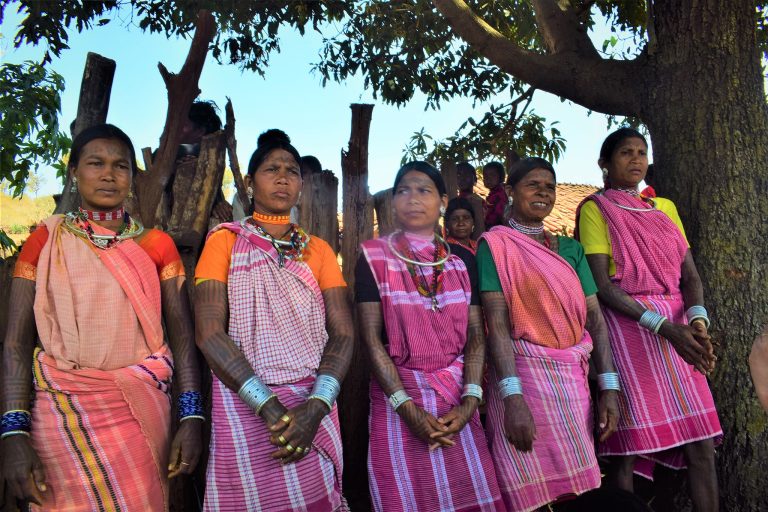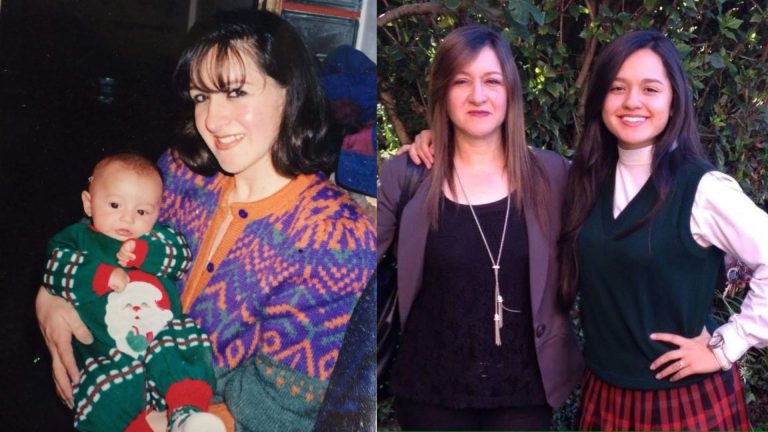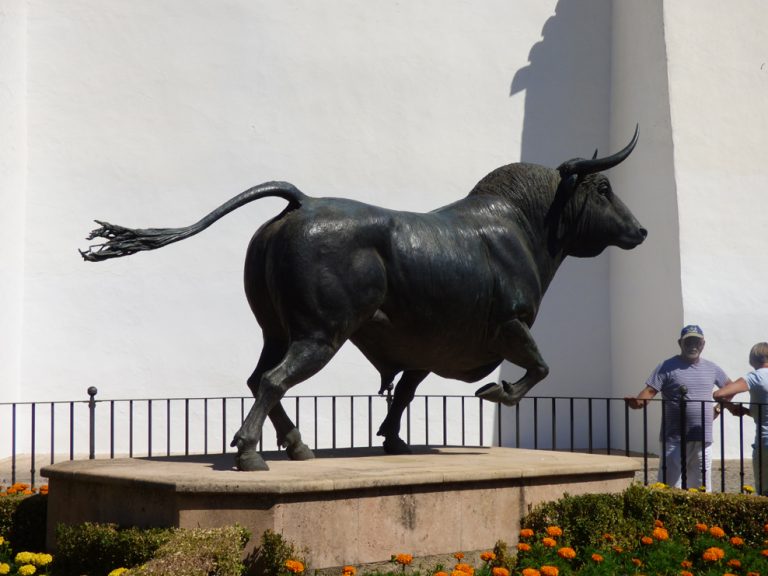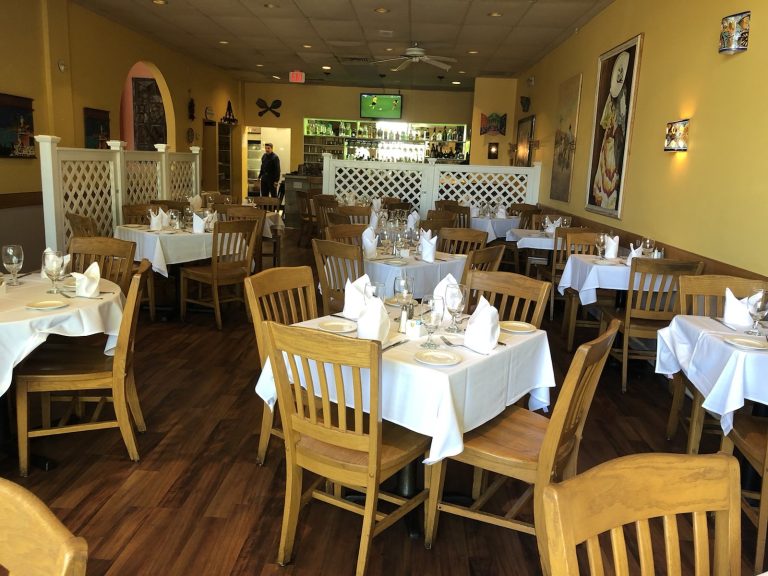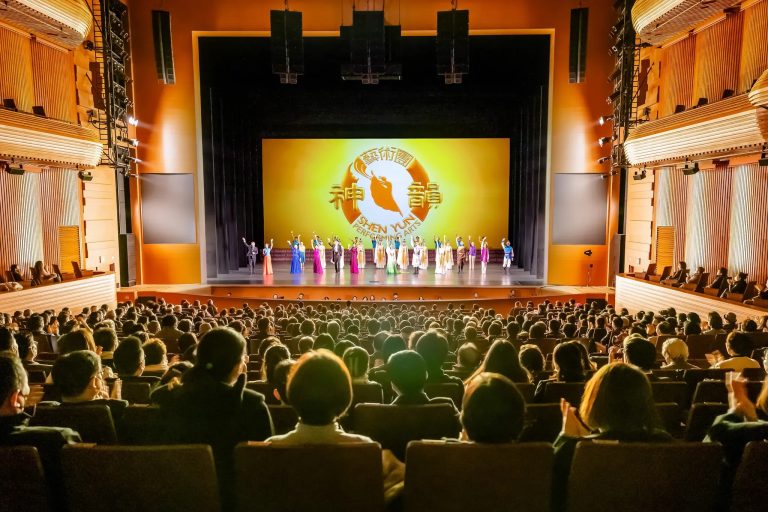Thought to be the oldest original dwellers of India, the Baiga tribe consider themselves to be the people of the forest. They have inhabited dense woodlands for generations, living on what they can secure with their bows and arrows.
As the subject of many written accounts, it is clear the early explorers found the Baigas’ unique traditions and mysterious spirituality fascinating. In today’s world, their traditional arts and elaborate rituals — including those for curing diseases and dispelling evil spirits — along with their extensive knowledge of nature, are a cultural treasure; yet these are all fading into obscurity.
The Baigas’ very survival has been threatened in recent years. Eviction from the forest with the establishment of national parks and irrigation projects has forced the Baigas to abandon what has been their home for hundreds of years. Adapting to modern society, in most cases, means severing ties with their aboriginal roots.
Let’s explore the beauty of the Baiga tribe, the challenges they face today and the importance of preserving their traditions.
Baiga means “sorcerer-medicine man”
The earliest reference to the Baigas is found in the Seoni Settlement Report of 1867, where the British captain WB Thompson referred to them as “the wildest of the tribes, inhabiting the most inaccessible hills and the remotest forests.” This tribe is largely found in the state of Madhya Pradesh, in central India, particularly in the districts of Mandla and Balaghat.
The Baiga are traditionally known for working as priests and medicine men. Performing rituals for entire villages, it was common for the tribe members to make a living by preventing hail storms and dispelling illness-causing evil spirits. This owed to their strong sense of spirituality and their understanding of natural medicines.
Success
You are now signed up for our newsletter
Success
Check your email to complete sign up
Coexisting with nature, the Baigas are careful to ensure that their practices are not detrimental to the environment, as it is not only their source of food and shelter, but also a representation of the Divine. They have long employed an ecological agricultural technique known as Bewar, in which millet is grown together with other crops without tilling the land.
The Baigas believe that plowing the land is tantamount to lacerating the Mother’s breast. To replenish the land, they combine a slash-and-burn practice with periodic relocation of their cultivated crops, which are supplemented with foraged wild edibles.

The Baigas are also skilled fishermen. Around September, men and women weave their fishing nets and take the opportunity to catch the fish of the season. The Baigas coexist with and depend on animals for their sustenance. Based on the wisdom of living in harmony with nature that has been common in nomadic groups for thousands of years, they revere and respect nature.
This traditional lifestyle has become harder and harder to follow, however. In the last few years, many Baigas have been displaced from the forest as a result of increased conservation measures across India.
With little knowledge of conventional agriculture, and no experience with life outside the jungle, several Baigas have found themselves struggling to feed themselves and their families, while others have had to become migrant workers in big cities.
Long-rooted mythology and theology
It is said that the Baigas have an air of superiority among many tribes. This is partly due to their reputation as powerful sorcerers, but mostly stems from their unique creation myth: they believe that humankind originated with them.
According to the Baigas, they are the descendants of the first-born son of their ancestor Nanga Baiga. The rest of humanity, the story explains, is descended from Nanga’s second son.
As to where the Divine resides, the Baigas uphold ancient animistic traditions and believe that all entities in nature, human and non-human, have a spiritual essence. Their main deity, Baradeo, is believed to dwell in the saaj tree, a species known to store in its stem drinking water with healing effects for stomach pain.

The Baigas worship a plethora of divinities, each of which governs a certain factor of daily life. Praying to Bhimsen, the rain-giving deity, is essential for their crops to grow; while venerating Gansam Deo, the protector against wild animal attacks, is critical to keeping the tribe safe. Household gods are also venerated to ensure the well-being of the family.
Today, however, many Baigas no longer pray to their traditional deities. Due to their displacement and progressive mixing with neighboring cultures, Hindu or Christian gods have become the recipients of many of their prayers. Other Baigas, in the face of modernity, have forgotten the value of praying altogether.
A faith-based lifestyle
The Baigas traditionally base their morals on the universal principle that good is rewarded and evil is punished. The presence of the Divine, everywhere in nature, guides the devout tribesmen to behave in a manner pleasing to the gods. Committing an evil deed is traditionally followed by a heartfelt request for divine forgiveness.
According to the Baigas, upon death, a human being is split into three spiritual entities: The first of them, “jiv,” returns to its place beside Bhagavan — the Creator. The second, “chhaya,” goes back to reside in what was his home during his earthly life to watch over the family home. The third one, “bhut,” is the evil side of the individual who must remain buried lest it brings calamity to the world of the living.
In the afterlife, it is believed that the person’s main soul lives on with the same social status it had during its stay on Earth. It would feed on the food it gave away to others while it was alive, to be reincarnated once the supplies were used up. A soul with a record of bad deeds and no virtuous merit would not, according to the Baigas, enjoy such good fortune.
This belief system shaped the Baiga tradition based on faith and righteous intention. For generations, their tribe has thrived on the unbreakable value of word of honor. Today, however, they seem to face a world of inverted values. The work to sustain the community, which they have done altruistically for centuries, is now quantified with money, a term that used to be alien to the tribesmen. Additional concepts such as property and inheritance have also become commonplace for the Baigas.

Many Baigas have experienced once-unfathomable greed and deception. After being evicted, they are allocated land on which they are expected not only to survive, but also to fulfill a growth requirement; yet the allotted plot is completely infertile. Others have been persuaded by officials and middlemen to invest their money in plots that turn out to be lifeless.
Tribal identity quickly fading away
The Baigas’ established mystique as sorcerers is further enhanced with the traditional tattooing of their women. Made with diluted sesame oil lamp soot and thin pieces of wood, the vivid lines and patterns cover almost the entire female body, symbolizing their beliefs, their identity and their life trajectory.
The tattooing is performed by specialized female artists who learned their skills through oral tradition passed on over countless generations. The intricate designs are drawn from memory and commonly include geometrical lines depicting mountains, the sun and the moon, along with some animal figures.
When a girl is eight to ten years old, she is ready to receive her first tattoo to symbolize both her identity as a Baiga and her entry into adulthood. Drawn on the forehead, it comprises a symbolic moon shape in the center and a series of lines above the eyebrows.
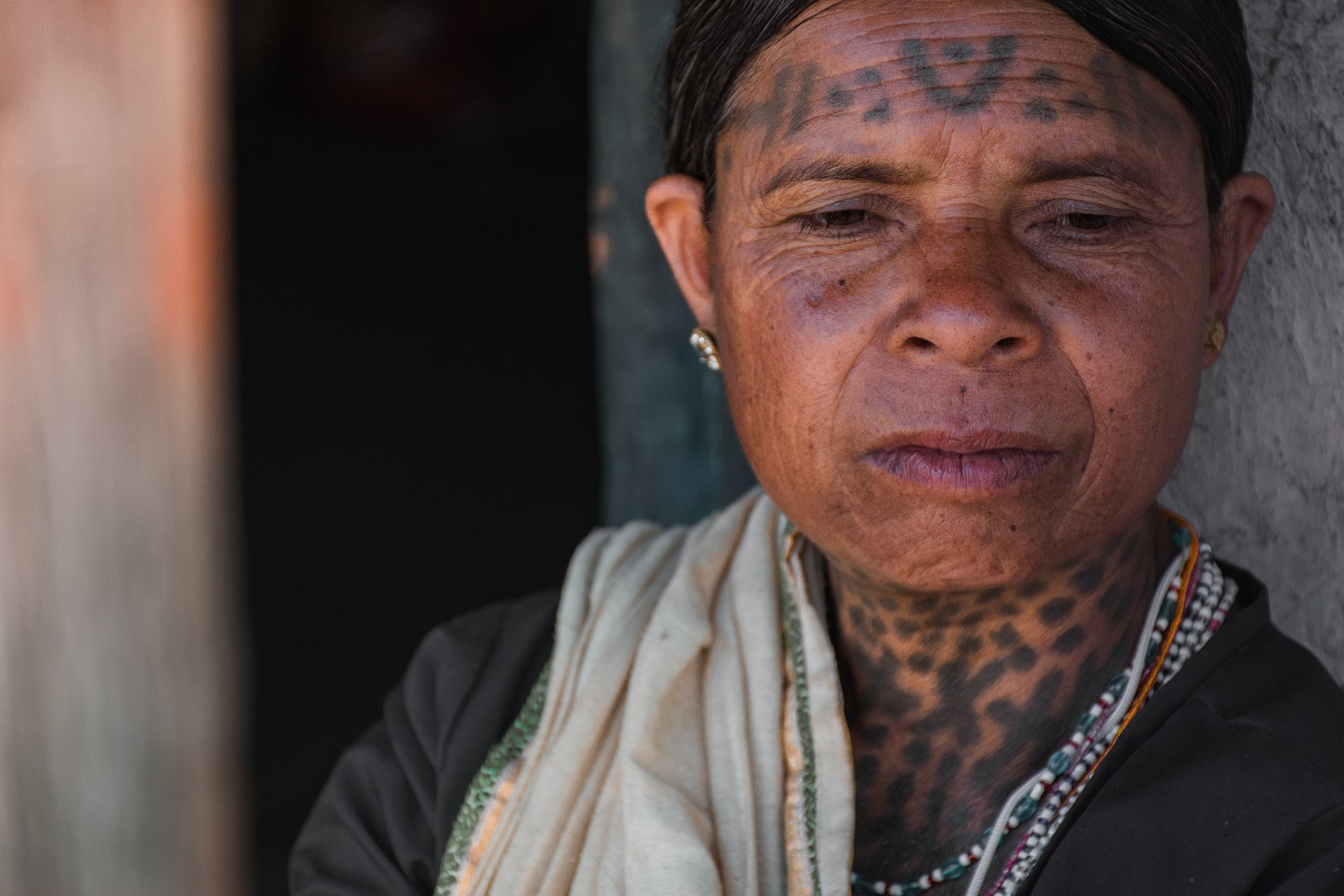
Dots, crosses and circles are tattooed on the back, arms and legs in a process that lasts until the girl reaches marriageable age. The neck and breasts are usually tattooed after giving birth to symbolize her plenitude as a woman, while the tattooing of the thighs is a decision granted to the husband.
This tradition, deeply rooted in their identity, is now on the verge of disappearing. The expulsion from their ancestral habitat and confluence with other cultures has progressively weakened their connection to their native culture and system of beliefs. Fewer and fewer girls are seen wearing the iconic tattoos, both for lack of understanding of their spiritual significance and for fear of being singled out when attending school in big cities.
When it comes to the Baiga men, tribal traditions also appear to be slowly vanishing. Shouldering the responsibility to provide for their families and faced with precarious living conditions in the territories allotted to them by Indian authorities, many have migrated to the big cities where the idea of running bare chested — a normal way of living in the jungle — is perceived as uncultured and primitive. It is increasingly common for Baiga men to wear conventional shirts and pants, and use modern devices like cell phones.
After years of being expelled from the jungle, the Baigas have had to make their way into the modern world, a world where documents outweigh promises and deception is disguised as good intentions. Lured by the comforts and pleasures of modernity, the younger generations have willingly forgotten their tribal roots, while their parents work earnestly to spare them the fate of being uneducated.
The older members of the tribe, particularly the elder women who still carry the Baiga marks on their skin, hold fast to the millenary traditions that for years allowed their people survive and live in harmony.
What others see as progress, they understand as oblivion for divinity and deviation of the human heart. Unless action is taken to protect and preserve the Baigas and their cultural heritage, the higher truths contained in their collective memory, usually in the form of oral traditions, will be forever lost with the eternal departure of their eldest members.



